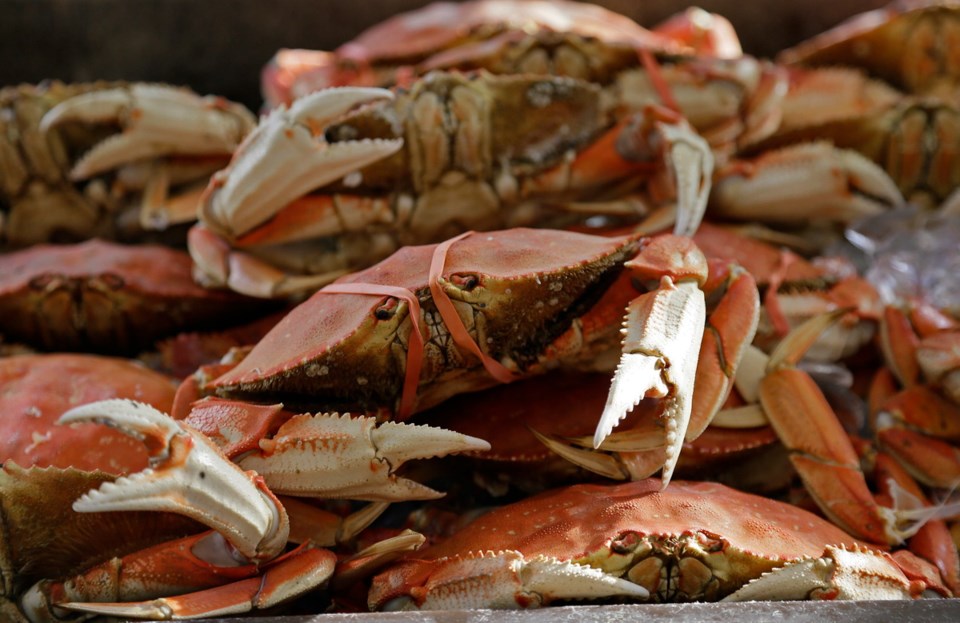B.C.’s crab fishermen are waiting to see if demand picks up for their catch as the presence of an algae-borne toxin postpones much of California’s crab fishing.
Storms have dissipated an algae bloom off B.C.’s coast. Even at its height in the summer, the massive bloom did not have the high concentrations of algae associated with demoic acid that showed up off the U.S., said Ian Perry, a research scientist with Fisheries and Oceans Canada in Nanaimo, on Friday. That has allowed B.C.’s fishery for sweet Dungeness crab to remain open.
Meanwhile, Oregon and Washington states are carrying out tests to decide if their commercial crab fisheries will open as usual in December. Demoic acid is a neurotoxin produced by tiny algae in the bloom.
Algae blooms are not uncommon off the coast but this one stretched from California to Alaska and lasted longer, from May to September, than is typical, Perry said.
Researchers are trying to figure out why the concentrations of algae associated with demoic acid were lower in B.C. and are looking at possibilities such as different ocean conditions and nutrient supply, he said.
The bloom stuck around in B.C. waters until heavy storms hit southern B.C. in late summer.
“It mixed the water column up a lot,” sending algae to deeper depths, Perry said.
California’s Fish and Game Commission voted in favour of the Dungeness delay and a rock crab closure north of the Santa Barbara-Ventura county line. The panel said crabbing would resume when toxin levels dropped but did not estimate when that might be.
The recreational Dungeness season was scheduled to start today and the commercial season was set for Nov. 15. Rock crabs are caught year-round in California.
In B.C., Dungeness crab represents virtually all crab caught.
Last year, 90 per cent of exported B.C. crab went to China, with three per cent of exports going to the U.S., said Mike Kattilakoski, a fisheries manager co-ordinator for invertebrates in B.C.’s south coast with the federal Fisheries Department.
B.C. fishermen can catch crab year-round, although some areas have seasonal closures for molting, when crabs discard their shells. There is no quota for crabs in B.C. Instead, the catch is managed through a minimum size and a rule that only males can be harvested.
Sidney commercial crab fisherman Kelvin Campbell said he’s normally out twice a week in his boat this time of year.
Crab prices are at about $6 a pound but can fluctuate dramatically. This year has seen them drop to $5 and go as high as $14.50, he said. Much of his catch goes to China and fishermen expect demand to spike during Chinese holidays, Campbell said.
He has not seen any increase in demand from the U.S. so far, but said that if it happens, it could stave off a price drop. If the entire U.S. coast were shut to commercial crab fishing, B.C. fishermen might see stronger prices, he said.



